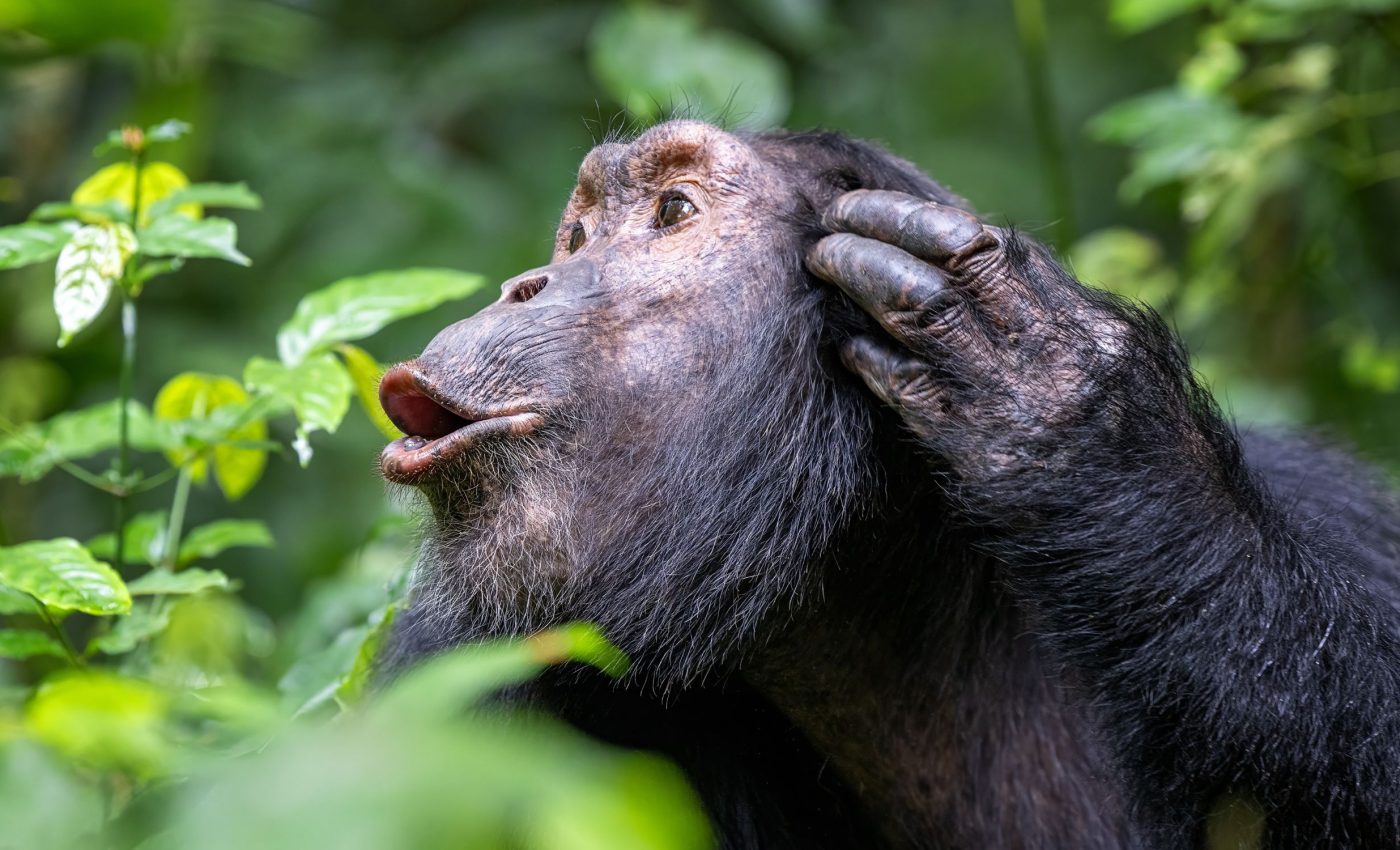
Chimpanzees mix vocal calls to create new meanings, like humans
Wild chimpanzees have surprised scientists again. They seem to combine single calls in ways that create new meanings for different situations.
In a new investigation led by Dr. Catherine Crockford of the Max Planck Institute for Evolutionary Anthropology, researchers have found that chimpanzees can embed one vocal call into another to shift its message in several ways.
This approach sheds light on how meaningful combinations of sounds might not be an exclusively human trick.
Chimpanzee calls and language origins
Chimpanzees produce a set of pant calls, grunts, and hoos that can match specific events or contexts. Scientists studying primate communication often focus on whether these calls can be recombined to express novel ideas.
“Generating new or combined meanings by combining words is a hallmark of human language, and it is crucial to investigate whether a similar capacity exists in our closest living relatives, chimpanzees and bonobos, in order to decipher the origins of human language,” said Dr. Crockford.
Observing apes in rich forest environments over many years helped researchers gather thousands of vocal utterances, matching them to various daily events.
How chimpanzees use call combinations
Previous analyses suggested that primates usually rely on single calls. But chimpanzees in this project displayed a variety of two-call combinations that seemed to deliver more complex messages than either single call alone.
“Recording chimpanzee vocalisations over several years in their natural environment is essential in order to document their full communicative capabilities, a task that is becoming increasingly challenging due to growing human threats to wild chimpanzee populations,” said Roman Wittig, co-author of the study and director of the Taï Chimpanzee Project.
Calls like hoo, pant, and grunt were often linked to feeding, traveling, approaching companions, or even building a nest.
Some paired calls strayed far from the meaning of either individual call. Others narrowed or clarified the meaning of one call by combining it with another.
Researchers also discovered that a pair of calls could add both meanings together. Sometimes, flipping the order of the same two calls changed which events triggered that combination.
Chimp calls are complex
“Our findings suggest a highly generative vocal communication system, unprecedented in the animal kingdom, which echoes recent findings in bonobos suggesting that complex combinatorial capacities were already present in the common ancestor of humans and these two great ape species,” said Cédric Girard-Buttoz, first author of the study.
”This changes the views of the last century which considered communication in the great apes to be fixed and linked to emotional states.”
Humans rely on syntax to shift the message of a group of words by rearranging them. Chimpanzee call combinations seem to share a similar principle, at least in miniature form.
Chimp calls and specific events
Scientists matched each vocal utterance to events such as resting, traveling, or social interactions.
Earlier studies found that certain hoo calls link with resting or feeding. This project took that approach further by analyzing two-call sequences in multiple communities of wild chimpanzees.
Some call pairs combined rest and social signals, while others popped up in contexts that had little to do with either call used alone. The addition or repositioning of a second call often changed the full vocal sequence’s event links.
Chimp calls hint at early language
Human language can create countless meanings from a limited set of sounds. These chimpanzee findings point to a flexible communication system that can widen its meaning capacity using simple steps.
Researchers say it is possible that human ancestors carried similar abilities. Over time, these may have expanded into the more detailed language structures we know today.
What researchers still need to learn
Questions remain about longer sequences that might chain three or more calls. Future studies may investigate how that chaining impacts clarity or social bonding among chimpanzees.
Scientists also want to see if other primates or animals use multiple call-combining strategies. Some suggest that more species might do the same if studied across enough time and daily contexts.
Experts emphasize that playback experiments could confirm how receivers interpret each combination. Wild animals rarely stand still for tests, but careful monitoring might reveal which part of a call they respond to.
There is also the question of whether some call pairs express reference to upcoming events. Knowing that certain sequences appear during, say, nest-building might help reveal how apes convey planning or intention.
More data is needed
With more data, researchers hope to better map how these combinations relate to specific events or states. Each new finding challenges the idea that only humans generate layered meanings from limited vocal elements.
Spending years in the field was crucial. It took that long to observe enough high-quality instances of different chimp calls, especially for rarer behaviors like nest-building.
Many wonder if these chimp call strategies might extend to gestures or other signals. Studies of both vocal and non-vocal communication could fill in gaps that remain.
Efforts to protect wild populations are also vital. Researchers stress that deforestation or poaching will cut short our chance to learn more about ape communication in its natural setting.
The study is published in Science Advances.
—–
Like what you read? Subscribe to our newsletter for engaging articles, exclusive content, and the latest updates.
Check us out on EarthSnap, a free app brought to you by Eric Ralls and Earth.com.
—–













